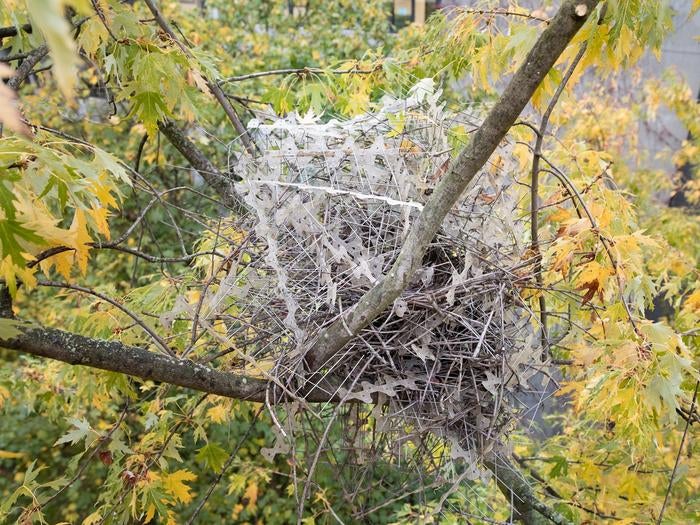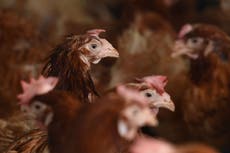Birds have learned to use our ‘anti-bird’ spikes to protect their own nests: ‘The ultimate adaptation’
‘It doesn’t get any crazier than this, does it?’
In the courtyard of a hospital in the city of Antwerp in Belgium, a patient discovered something strange in a huge bird nest.
High up in a tree, magpies had made a huge nest using up to 1,500 metal spikes, building what scientists describe as “an impregnable fortress.”
Dutch biologists who analysed the nest say the birds may have pulled as many as 50m (150ft) of anti-bird pins from the eaves, and appear to have used them exactly the same way we do: “to keep other birds away from their nest.”
The finding, along with those of similar ones, suggest birds are stealing and using anti-bird spikes on many buildings to build their own defence around their nests in what scientists call “the ultimate adaptation” to city life.
These spikes are sharp metal projections designed by humans and placed on buildings to scare away birds and to prevent them from building nests.
But the spikes are now seen in the nests of a crow and a magpie, according to a new study, published in the journal Deinsea.
“Just when you think you’ve seen it all after half a century of studying natural history, these inventive crows and magpies really surprise me again,” study co-author Kees Moeliker, director of the Natural History Museum Rotterdam, said.
These special nests reveal for the first time “an ultimate adaptation” of birds to life in the city, scientists say.

“It’s like a joke, really. Even for me as a nest researcher, these are the craziest bird nests I’ve ever seen,” biologist Auke-Florian Hiemstra from the Naturalis Biodiversity Center in the Netherlands said.
Magpies are known to build roof-like structures on their nests to prevent the robbery of eggs and young, but until now these “roofs” have mostly used only thorny plants found in nature, researchers say.
In the cities, however, the study suggests these birds have found an alternative material – human-made anti-bird spikes.
The new research describes several magpie nests with anti-bird spikes used as the nesting material with the behaviour already seen among birds in the Netherlands, Belgium and Scotland.
“They are literally made to keep birds at bay... which is how they seem to be used by birds as well,” Mr Hiemstra, who is pursuing PhD at Naturalis and Leiden University, said.
Researchers also found other sharp materials like barbed wire and knitting needles used by magpies for the roof of their nests.
Scientists have already known that birds are not easily deterred by the pin.
The viral video of the ‘Parkdale Pigeon‘ and of several other rebellious birds, have gained fame on social media for not being scared away by anti-bird spikes.
Previous observations have spotted birds using artificial materials like face masks and plastic plants for building their nests, as well as condoms, fireworks, cocaine wraps, sunglasses and windshield wipers as nesting material.
But the latest study is the first showing that birds are also using the same anti-bird pins used by humans to deter them as nesting material.
“If even bird-repellent sharp spikes are used as nesting material, apparently anything can end up in a bird’s nest these days. It doesn’t get any crazier than this, does it?” the PhD candidate added.
Join our commenting forum
Join thought-provoking conversations, follow other Independent readers and see their replies
Comments


Bookmark popover
Removed from bookmarks